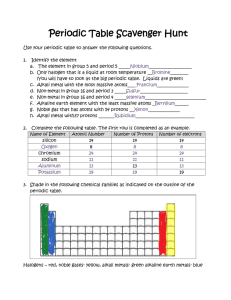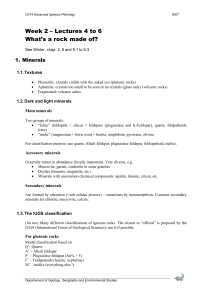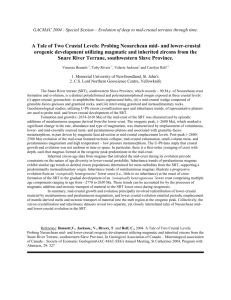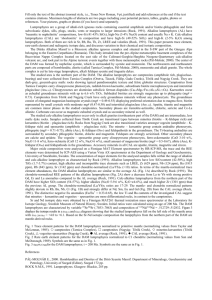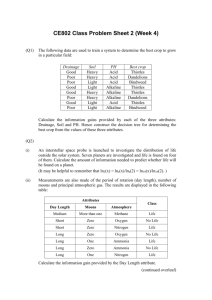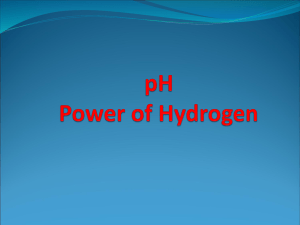Classification of magmatic rocks
advertisement
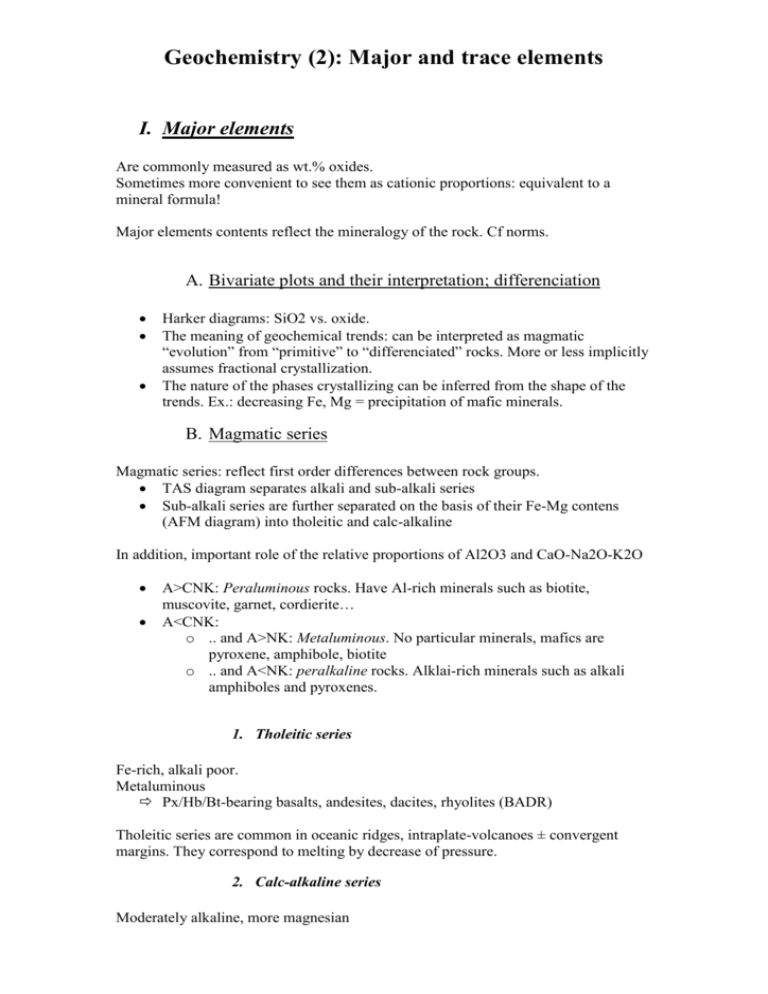
Geochemistry (2): Major and trace elements I. Major elements Are commonly measured as wt.% oxides. Sometimes more convenient to see them as cationic proportions: equivalent to a mineral formula! Major elements contents reflect the mineralogy of the rock. Cf norms. A. Bivariate plots and their interpretation; differenciation Harker diagrams: SiO2 vs. oxide. The meaning of geochemical trends: can be interpreted as magmatic “evolution” from “primitive” to “differenciated” rocks. More or less implicitly assumes fractional crystallization. The nature of the phases crystallizing can be inferred from the shape of the trends. Ex.: decreasing Fe, Mg = precipitation of mafic minerals. B. Magmatic series Magmatic series: reflect first order differences between rock groups. TAS diagram separates alkali and sub-alkali series Sub-alkali series are further separated on the basis of their Fe-Mg contens (AFM diagram) into tholeitic and calc-alkaline In addition, important role of the relative proportions of Al2O3 and CaO-Na2O-K2O A>CNK: Peraluminous rocks. Have Al-rich minerals such as biotite, muscovite, garnet, cordierite… A<CNK: o .. and A>NK: Metaluminous. No particular minerals, mafics are pyroxene, amphibole, biotite o .. and A<NK: peralkaline rocks. Alklai-rich minerals such as alkali amphiboles and pyroxenes. 1. Tholeitic series Fe-rich, alkali poor. Metaluminous Px/Hb/Bt-bearing basalts, andesites, dacites, rhyolites (BADR) Tholeitic series are common in oceanic ridges, intraplate-volcanoes ± convergent margins. They correspond to melting by decrease of pressure. 2. Calc-alkaline series Moderately alkaline, more magnesian Metaluminous to peraluminous BADR, that can feature ms/gt/cd in the more differenciated terms Calc-alkaline series are mostly found in convergent margins. They correspond to melting by adding water to the source (and therefore “shifting” the solidus towards lower temperatures). 3. Alkaline series Alkali rich, Fe-rich Metaluminous to peralkaline Evolution towards trachytes (moderaltely alkaline series) or phonolites (very alkaline series), that can feature riebeckite, aegyrine, etc. Alkaline series are found in intra-plate situations ± convergent margins. They correspond to melting by increase of temperature. II. Trace elements A. Substitutions and partition coefficients Substitutions occur between elements that have… Same charge Similar ionic radii Coupled substitutions Ex: the plagioclase substitution Partition coefficients: for each pair element/mineral, K min eral / melt D element min eral Celement magma Celement An element is compatible (with a mineral) when KD > 1 (the element is “partitioned” preferentially into the solid, Cmineral > Cliquid). An element is incompatible (with a mineral) when KD < 1 (the element is “partitioned” preferentially into the liquid, Cmineral < Cliquid). Compatible and incompatible are often used as absolute terms, because some elements do not fit in any crystal (or nearly so). This is, however, a slightly abusive use. B. Normalization and spidergrams 1. What is “normalization”, and why do it? Abundance of elements varies greatly in the Earth: Different families of elements are more or less present Even within a family, nucleosynthesis results in huge variations 2. Spidergrams Spidergrams allow to See many elements at a time Compare elements with large differences of absolute abundance (log scale!) To some degree, make petrogenetic interpretations Making a spidergram For each sample, arrange elements in order of increasing compatibility (i.e., the more incompatible at the left). (technically, this implies a different order for each different source!). Plot the normalized value of each elements (log scale!) Link the dots Look at the “anomalies”! Some classical spidergrams: REE diagrams (n’ed to chondrites or PRIMA=PRImitive MAntle in general) Multi-element diagrams for incompatible elements (N’ed to PRIMA/chondrites, or to MORBs) PGE diagrams Transition metal diagrams

